21+3 Blackjack Side Bet
The 21+3 side bet has become one of the most popular among blackjack players since its 2001 debut in Las Vegas. It offers players a chance to create a winning hand with a specific combination of three cards. How does it work? Keep reading to find out.
Online Casinos where you can play the 21+3 Blackjack side bet
21 Casino
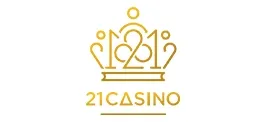
Get 70 Real Money Spins
on Book of Dead
Cash spins must be used within 10 days. Winnings from spins credited as cash funds and capped at £100. Cash funds are immediately withdrawable. Affordability checks apply. Terms apply. Please gamble responsibly.
Genting Casino

Get 100% up to £150
+ 50 Spins on
Big Bass Bonanza
Grosvenor Casino

New Players
Deposit £20
Play with £50
What is the 21+3 Blackjack Side Bet?
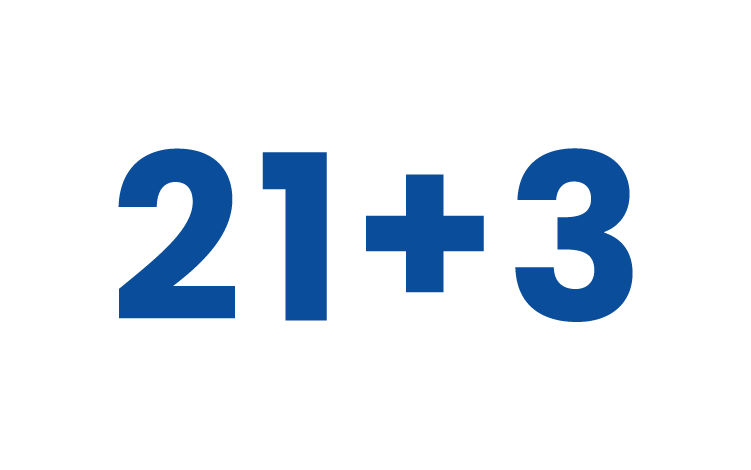
Side bets are one of the most confusing aspects of playing blackjack, but the 21+3 side bet is usually straightforward enough for newcomers to grasp.
The 21+3 side bet in blackjack is an optional wager available to players, alongside their standard bets. Unusually, this side bet blends elements of blackjack and poker to help increase a player’s potential win. There are 3 cards involved in the 21+3 side bet: the player’s 2 cards and the dealer’s face-up card. We’ll walk you through it all below.
What Does Side Bet Mean?
When a player makes a side bet during a game of blackjack, they place an extra wager alongside their primary bet when a round starts. Players are under no obligation to use side bets, and beginners may prefer to focus on main bets for their first few games before branching out.
There are lots of side bets available in blackjack, and most offer a slim chance of winning, though they can lead to generous payouts. Winning with a side bet typically depends on chance rather than skill, so players need to think carefully about whether the extra wager is worth the risk of a potential loss before they take part.How Can You Take Part in a 21+3 Blackjack Side Bet?
If you want to participate in a 21+3 blackjack side bet before a round starts, you must tell the dealer. They will deal you your opening two cards then reveal their face-down card. It’s that simple.
But how do you know if you’ve scooped a tasty win with your 21+3 side bet? That depends on whether or not your two cards and the dealer’s card combine to create a valuable three-card poker hand. The dealer will check the cards and determine what prize to award (if any).
Determining Side Bets
There are five possible winning hands with the blackjack 21+3 side bet. If you’re a seasoned poker player, you should recognise the potential winning hands created with the 21+3 side bet. If not, though, it’s crucial that you know what they are before you try it. Let’s take a close look at each one.
Flush
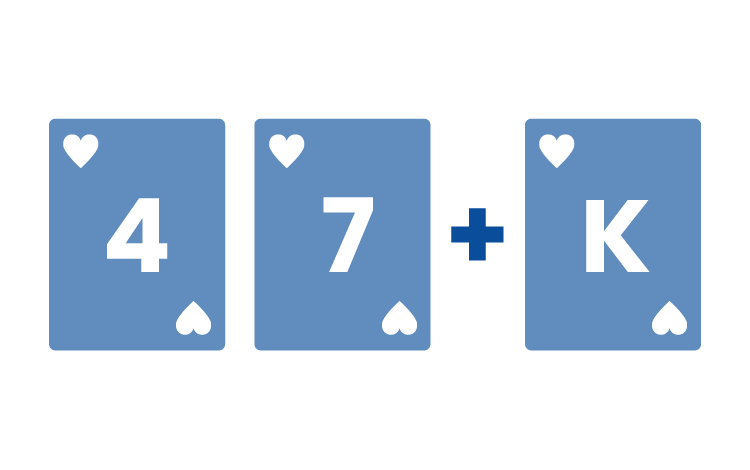 A flush is essentially the inverse of the straight: you match three cards of the same suit but not in sequence. That means you might form a winning 21+3 blackjack side bet with a 4, 7, and king of hearts.
A flush is essentially the inverse of the straight: you match three cards of the same suit but not in sequence. That means you might form a winning 21+3 blackjack side bet with a 4, 7, and king of hearts.
Straight Flush
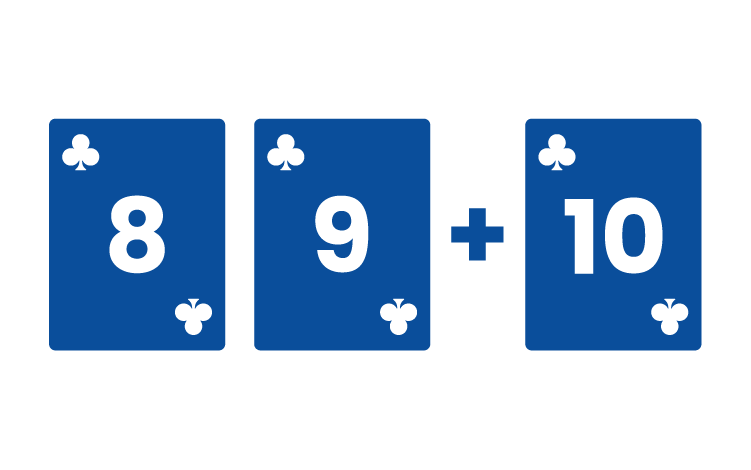 A straight flush consists of three cards of the same suit in an ascending numerical sequence. For example, you might create a winning 21+3 side bet with the 8, 9, and 10 of clubs.
A straight flush consists of three cards of the same suit in an ascending numerical sequence. For example, you might create a winning 21+3 side bet with the 8, 9, and 10 of clubs.
Straight
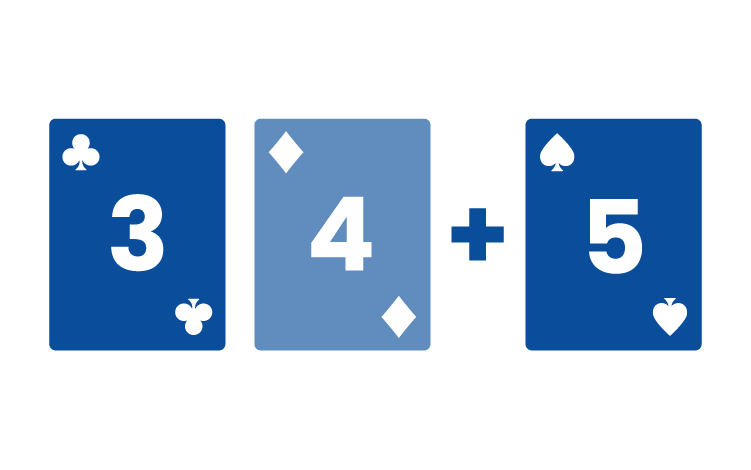 To form a straight, match three cards in sequence but not the same suit. That creates a little more freedom. You could win with 3 of clubs, 4 of diamonds, and 5 of spades.
To form a straight, match three cards in sequence but not the same suit. That creates a little more freedom. You could win with 3 of clubs, 4 of diamonds, and 5 of spades.
Three of a Kind
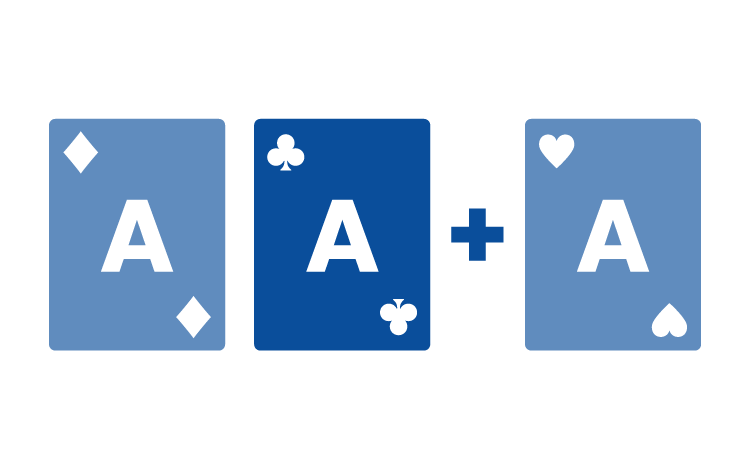 Match 3 cards of identical rank/value to win with a blackjack 21+3 side bet. That can be a trio of cards from any suit.
Match 3 cards of identical rank/value to win with a blackjack 21+3 side bet. That can be a trio of cards from any suit.
Suited Three of a Kind
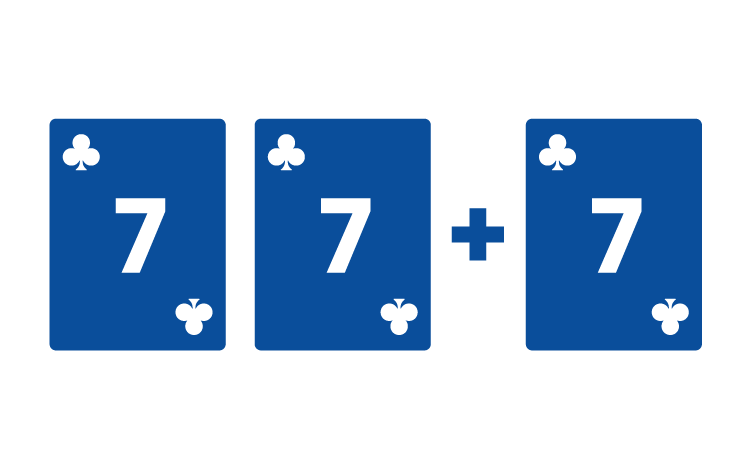 To win with a suited three of a kind, land three cards of the same suit and rank/value. A winning hand may be a trio of 7 of clubs, for instance.
To win with a suited three of a kind, land three cards of the same suit and rank/value. A winning hand may be a trio of 7 of clubs, for instance.
Blackjack Side Bet 21+3 Payouts
Understanding 21+3 blackjack side bet payouts can be tricky. But familiarising yourself with them can help you make sense of how much you will win for each hand when the cards are revealed.
Here are the 21+3 blackjack odds and payouts for all potential winning hands, from the lowest-paying to the highest:
- Flush: 5 to 1 (16:1)
- Straight: 10 to 1 (31:1)
- Three of a kind: 30 to 1 (425:1)
- Straight flush: 40 to 1 (460:1)
- Suited three of a kind: 100 to 1 (4,332:1)
So, as the flush is the winning hand that players are most likely to create in their 21+3 blackjack side bet, that will award the smallest payout. The suited three of a kind is the least likely combination, which is why it offers the biggest potential payout.
The number of decks used affects the odds of creating a specific combination of cards, the house edge, and the payouts awarded. The more decks in use, the more cards players have to choose from — which makes it more difficult to create certain combinations.
How does the blackjack 21 3 side bet compare to other side bets available? The payouts on offer tend to be higher with 21+3, which is why it may appeal to players focused on claiming the biggest prizes despite the risk. It can also be simpler to grasp than some other side bets, which could make it a decent option for beginners.
The blackjack top 3 side bets also include:
- Perfect Pairs: Only uses a player’s cards, and pays out for two of a kind. These may be: of the same rank/value, but contrasting colours and suits; of the same value and colour; or two identical cards.
- Insurance: Insurance is available when a dealer holds an ace. This means betting on the dealer having a blackjack hand, and it pays out at 2 to 1.
Pros and Cons of 21+3 Blackjack Side Bets
Playing 21+3 in blackjack has advantages and disadvantages, just like any other side bet. Here are the main pros and cons you need to know before you try 21+3 for the first time.
Offers the chance to win generous payouts with modest odds
If you are not careful, this side bet could reduce your bankroll sooner than you expect
Introduces a fresh and exciting gameplay twist: blending blackjack and poker into one side bet
Boosts the house edge, as side bets tend to have harsher odds than the core game
It is fairly easy for players of all levels to pick up
Want to Know More About How to Play Blackjack?
We hope our guide has made the 21+3 blackjack side bet simple to follow. This side bet can help you create a winning hand from your two cards and the dealer’s face-up card at the start of a blackjack round. There are 5 possible winning hands with a payout of up to 100 to 1.
If you want to know more about playing blackjack, check out the rest of the Gambling Zone Blackjack Learning Zone.